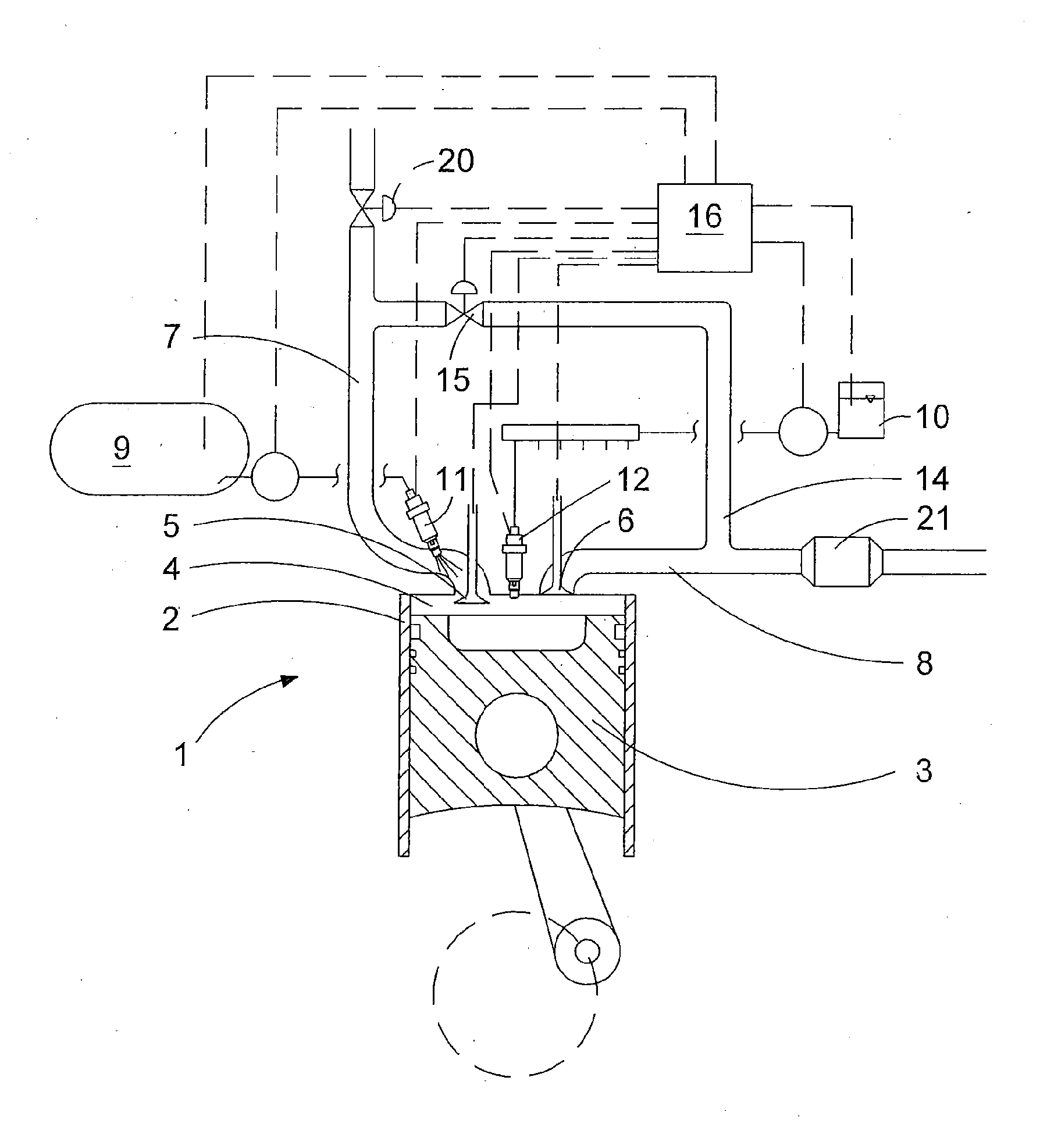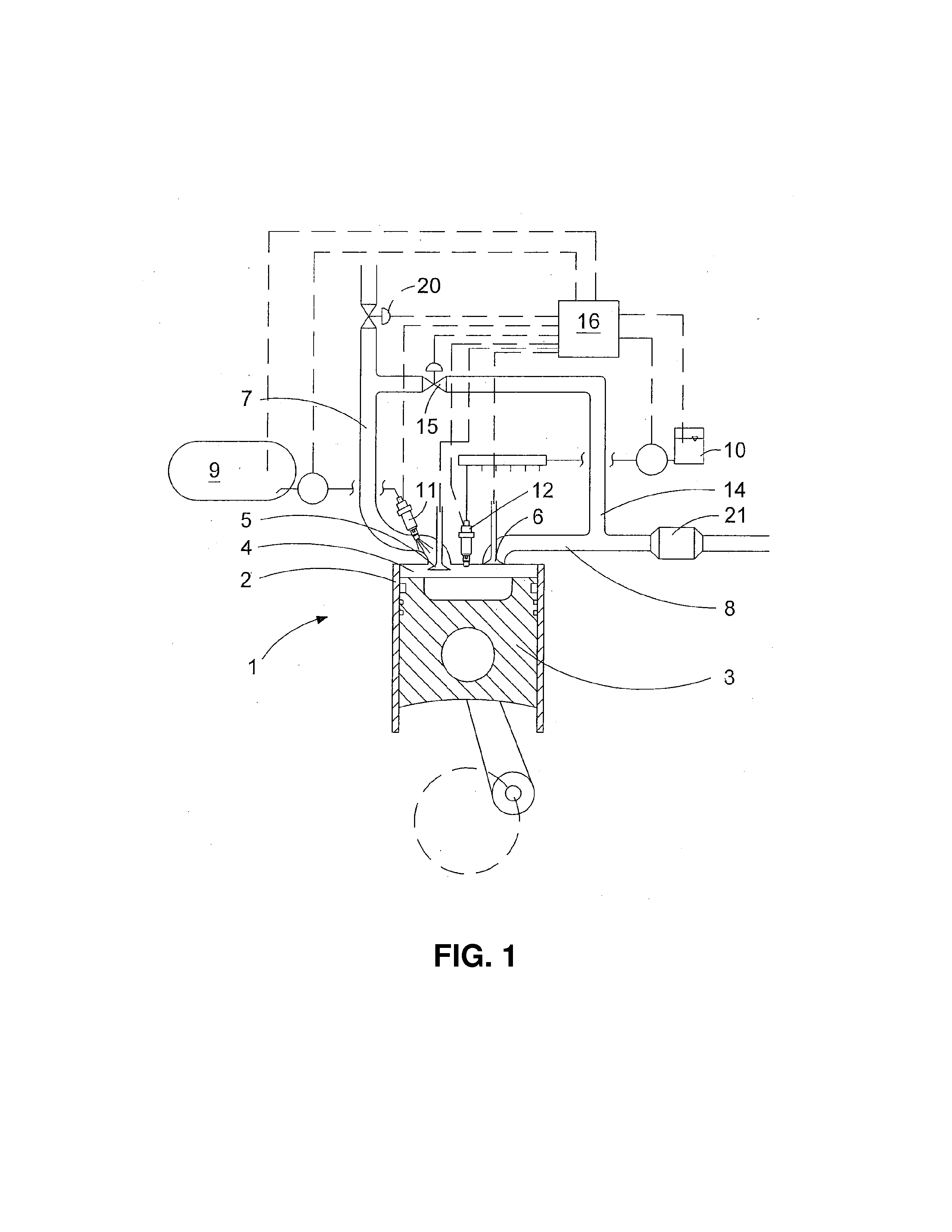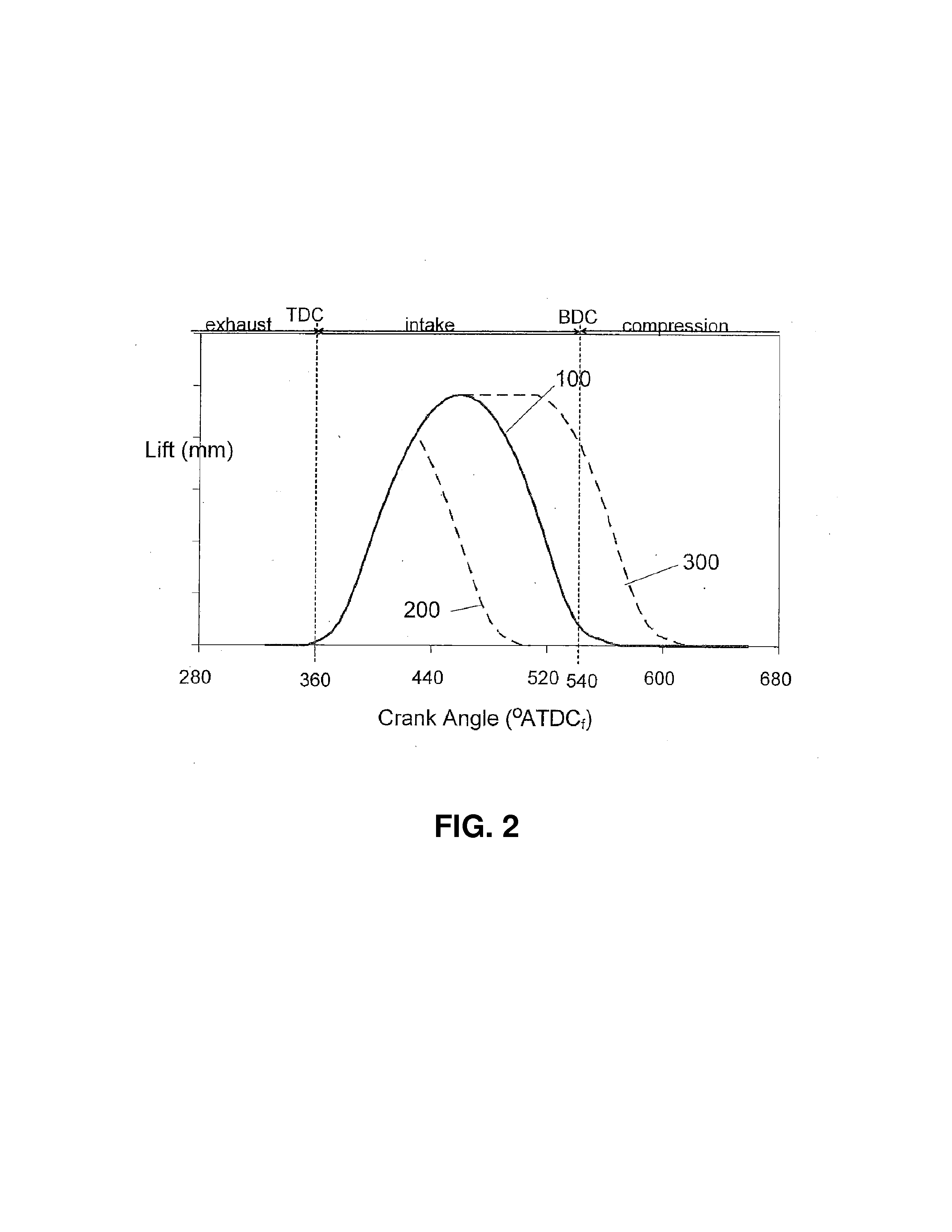Gaseous-Fuelled Stoichiometric Compression Ignition Internal Combustion Engine
a technology of gaseous fuel and internal combustion engine, which is applied in the direction of gaseous engine fuel, machines/engines, process and machine control, etc., can solve the problems of requiring more expensive aftertreatment subsystems to reduce no/sub>x/sub>levels, and reducing efficiency and/or power output. , to achieve the effect of reducing the overall pumping work, and efficient operation
- Summary
- Abstract
- Description
- Claims
- Application Information
AI Technical Summary
Benefits of technology
Problems solved by technology
Method used
Image
Examples
Embodiment Construction
)
[0042]For purposes of focus and brevity certain aspects of the embodiments that are conventional and well known to those familiar with gaseous fuelled engine technology are not described in detail.
[0043]In the prior art, certain terms have been used in different contexts and in different publications to have different meanings. Accordingly, in the context of this disclosure and the description of the present method and apparatus, the following terms are defined as follows:
[0044]“Stoichiometric” refers to situations pertaining to oxidant and fuel mixtures in which the total amount of oxidant is balanced with the total amount of fuel present such that both would be essentially completely consumed when combusted. Numerically the total oxidant / total fuel ratio is preferably 1±0.1 and more preferably 1±0.05.
[0045]“Normal” engine operation refers to the various routine modes of operation for the engine when operating in a steady state (for example: idle, light load, full load). Most of t...
PUM
 Login to View More
Login to View More Abstract
Description
Claims
Application Information
 Login to View More
Login to View More - R&D
- Intellectual Property
- Life Sciences
- Materials
- Tech Scout
- Unparalleled Data Quality
- Higher Quality Content
- 60% Fewer Hallucinations
Browse by: Latest US Patents, China's latest patents, Technical Efficacy Thesaurus, Application Domain, Technology Topic, Popular Technical Reports.
© 2025 PatSnap. All rights reserved.Legal|Privacy policy|Modern Slavery Act Transparency Statement|Sitemap|About US| Contact US: help@patsnap.com



